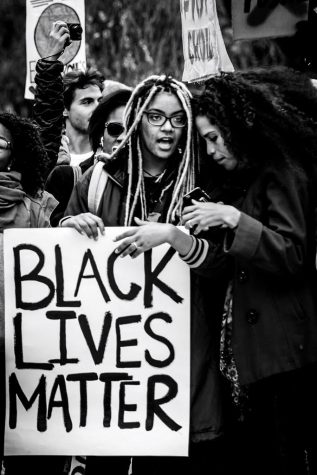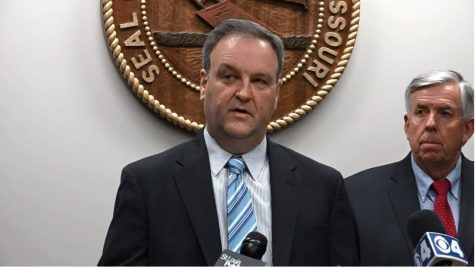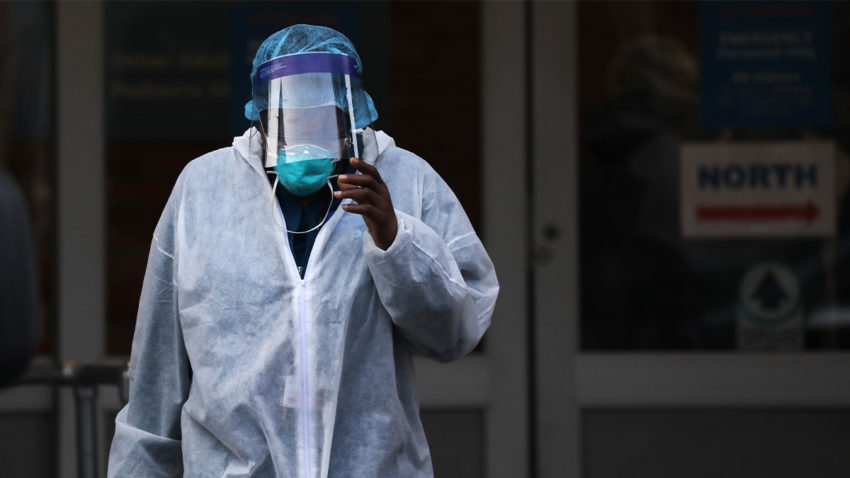Spencer Platt/Getty Images
Race’s Role in COVID-19
Coronavirus disproportionately affects African Americans, yet systems to prevent this do not support them
There has been a prevailing narrative throughout this pandemic that COVID-19 doesn’t discriminate. That everybody, from world leaders and celebrities to grocery store and factory workers, is affected. However, because of existing disparities, the effects on different communities vary greatly. Suffering changes depending on circumstance and background. Because of this, we are faced with this unconscionable fact: COVID-19 is disproportionately killing Black people across the United States. The pandemic has highlighted systemic inequalities that have long been pervasive in Black communities in the US, especially in cities like St. Louis. In St. Louis City, less than half of the population is Black, yet almost 70% of deaths from COVID-19 are attributed to Black people. In St. Louis County, less than a quarter of the population is Black, yet roughly half of deaths from COVID-19 are attributed to Black people. These numbers are appalling. Many often examine the systemic barriers faced by Black people, but it is inadequate just to examine. We must act. The cycle must be stopped.

Black people and communities face systemic barriers, making it harder to fight COVID-19. This starts with basic needs, such as disparities in the ability to access stable housing, quality jobs and healthcare. Historically, redlining, segregation and housing covenants constricted Black people’s access to housing, creating problems that are still present today. A 2017 Princeton University study found persistent residential segregation to “trap black children in unhealthy, polluted neighborhoods,” weakening the immune system and making them more susceptible to disease. According to US Census data, in St. Louis City and County in 2015, the homeowner rate for white households was 75.8%, while the homeowner rate for Black households was 39.9%. Additionally, compared to the overall population, Black people are more likely to hold jobs that are deemed essential during this pandemic, according to data from the US Bureau of Labor Statistics. Being an essential worker means more exposure to other people, making it easier to contract the virus. As found in data from the US Census Bureau, Black people in St. Louis are more likely to have low-paying jobs. Lack of access to stable, high-paying jobs impacts access to quality healthcare and health insurance, and can often mean no paid sick leave. Conditions like diabetes, obesity, heart problems and hypertension are also prevalent, which has put Black people in the high-risk category for COVID-19. These systemic issues have created the perfect storm for the pandemic to take hold in Black communities.

So what can we do? What are the next steps to take in order to lower the rate of Black people contracting and dying from COVID-19? The first step is to, as County Executive Sam Page said in an April press conference, distribute relief funds in a way that is “equitable rather than equal”. It is crucial that the communities that are hit the hardest receive the most assistance. There also must be free testing and contact tracing available to Black communities. With any data collected, race and demographic needs to be reported so that impact can be understood and studied. Paid sick leave should be offered, so those with symptoms of COVID-19 do not feel pressured to go to work, risking infecting others. To create stable housing during the pandemic, the government needs to work with banks and landlords to relieve people from the threat and stress of evictions. Lastly, an expansion of Medicaid and Medicare provides the resources for people to seek treatment, instead of having to choose between overwhelming medical fees or harming their health and the health of those around them. The more aid is focused on the hardest-hit communities, the sooner we will be able to overcome this pandemic. However, aid must not end when the pandemic does. The issues that exacerbate the effects of COVID-19 on Black people are deeply ingrained in our society, and certainly will still be prevalent when all of this is over. It has never and will never be enough to aid those who are suffering superficially. As a city and as a nation, we need to look first to help communities in need before we can look ahead.
